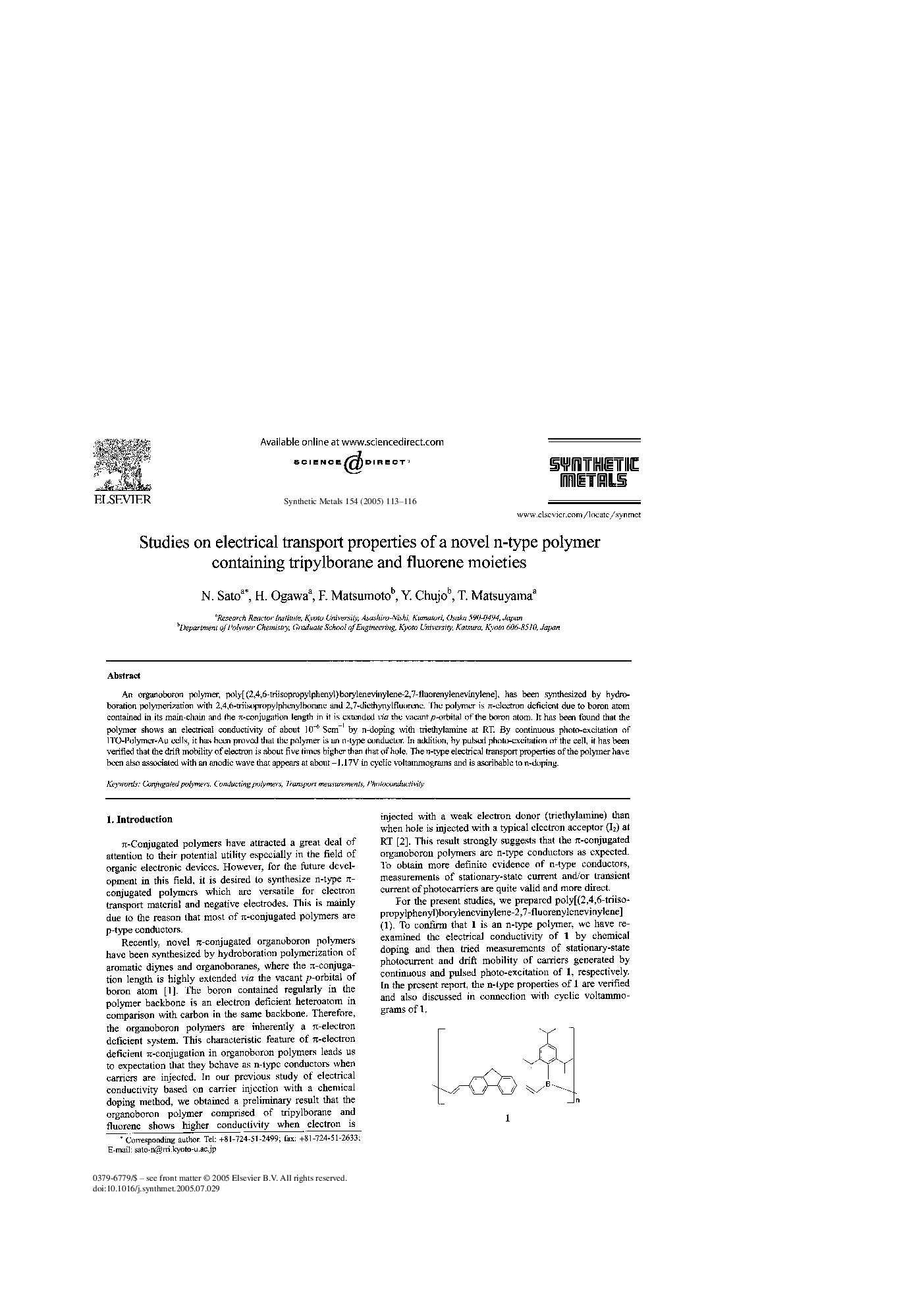| Article ID | Journal | Published Year | Pages | File Type |
|---|---|---|---|---|
| 9776227 | Synthetic Metals | 2005 | 4 Pages |
Abstract
An organoboron polymer, poly[(2,4,6-triisopropylphenyl)borylenevinylene-2,7-fluorenylenevinylene], has been synthesized by hydro-boration polymerization with 2,4,6-triisopropylphenylborane and 2,7-diethynylfluorene. The polymer is Ï-electron deficient due to boron atom contained in its main-chain and the Ï-conjugation length in it is extended via the vacant p-orbital of the boron atom. It has been found that the polymer shows an electrical conductivity of about 10â6Â Scmâ1 by n-doping with triethylamine at RT. By continuous photo-excitation of ITO-Polymer-Au cells, it has been proved that the polymer is an n-type conductor. In addition, by pulsed photo-excitation of the cell, it has been verified that the drift mobility of electron is about five times higher than that of hole. The n-type electrical transport properties of the polymer have been also associated with an anodic wave that appears at about â1.17Â V in cyclic voltammograms and is ascribable to n-doping.
Related Topics
Physical Sciences and Engineering
Materials Science
Biomaterials
Authors
N. Sato, H. Ogawa, F. Matsumoto, Y. Chujo, T. Matsuyama,
